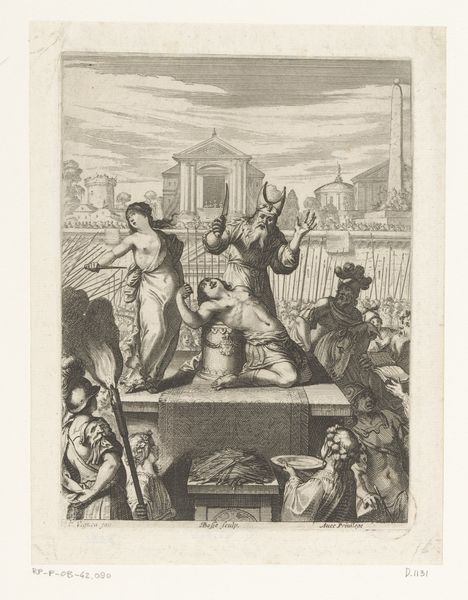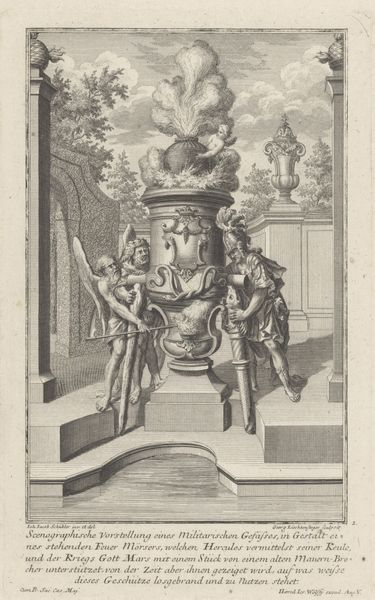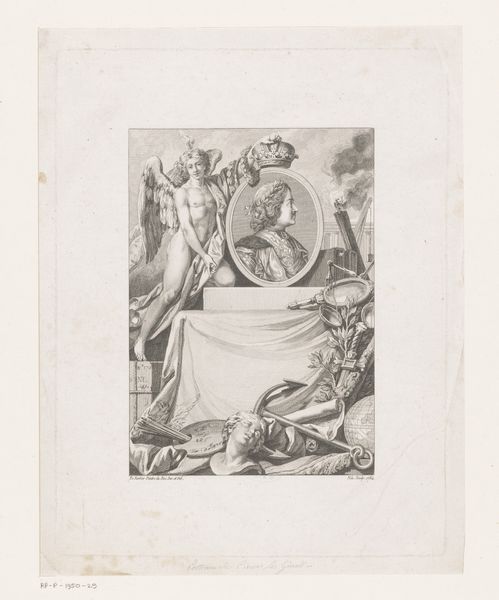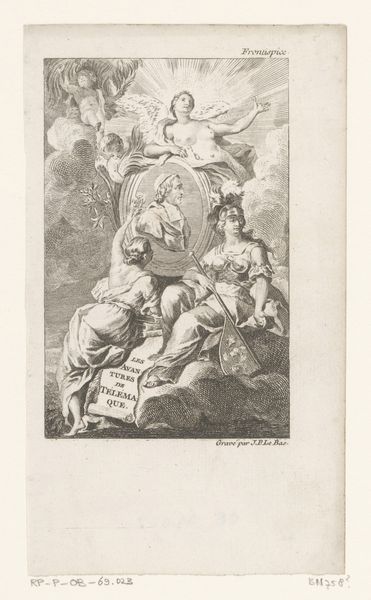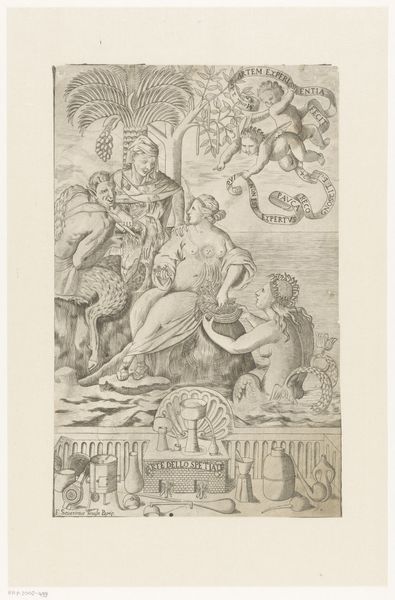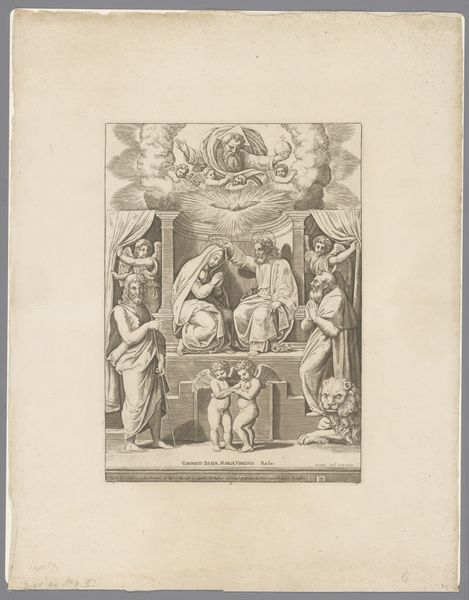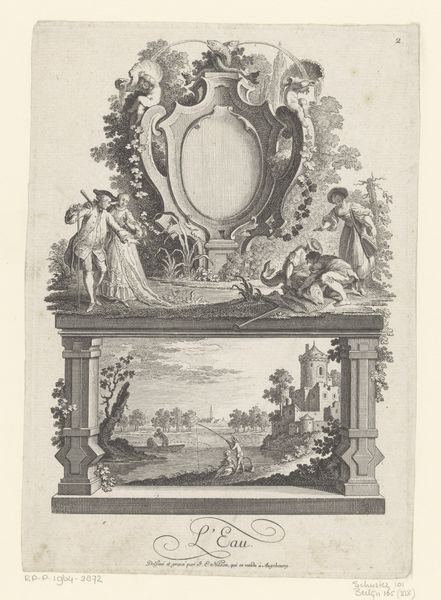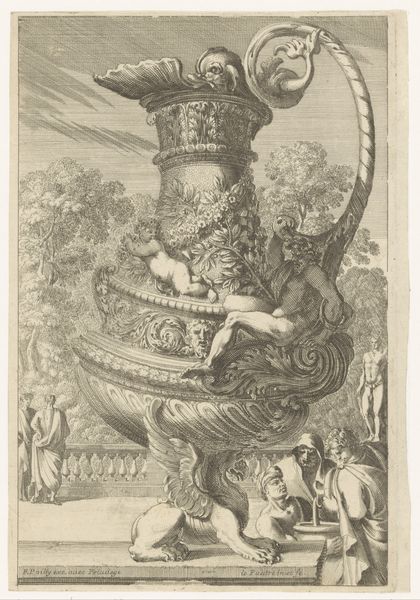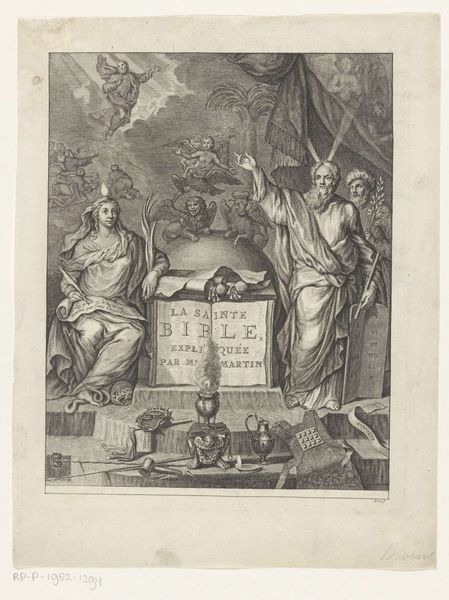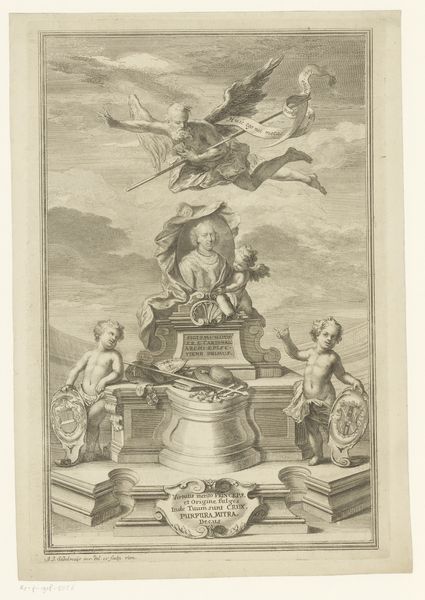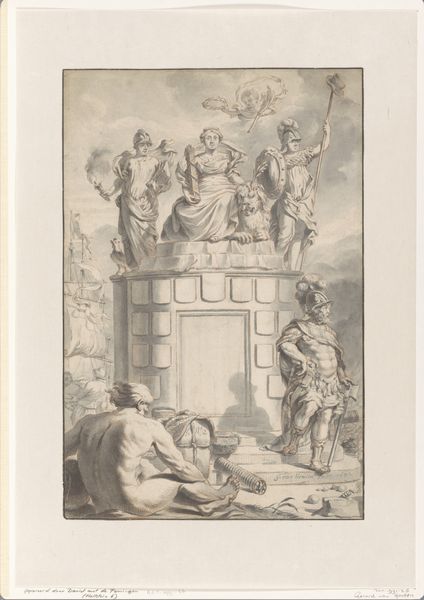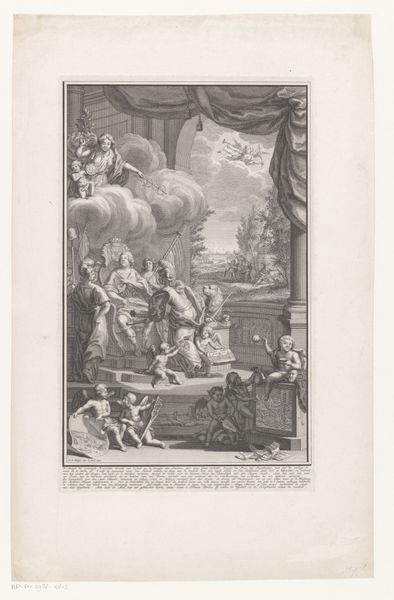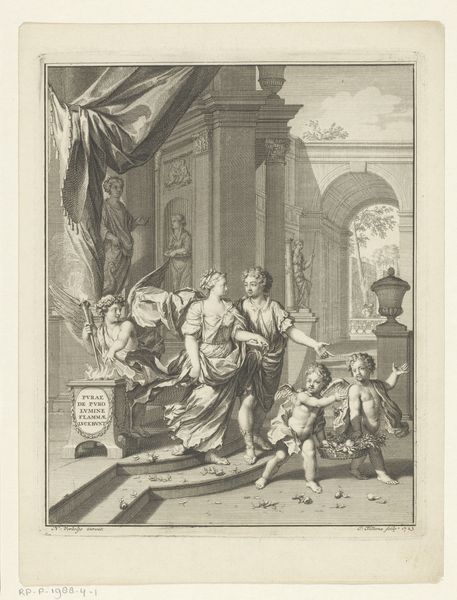
engraving
#
portrait
#
neoclacissism
#
allegory
#
figuration
#
line
#
history-painting
#
academic-art
#
engraving
#
realism
Dimensions: height 465 mm, width 395 mm
Copyright: Rijks Museum: Open Domain
Editor: Here we have Christian Gottlieb Geyser's "Grave Monument for Maximilian Julius Leopold," an engraving made between 1785 and 1803. It has a neoclassical style and appears to be allegorical. The monument seems the central focus. What can you tell me about how society might have influenced this piece? Curator: Well, looking at this, we see Neoclassicism, which arose during the Enlightenment. The public role of art was evolving. Artists were commissioned to produce works with didactic or moral messages, intended for public consumption and education. It was a time when reason and order were highly valued. Editor: So, the composition reinforces a societal value, perhaps? Curator: Precisely. The idealized figures embody virtues associated with good governance and enlightened society. Consider the figure on the left, perhaps an allegory for remembrance. And look at the monument, it references back to a lineage of authority and legacy. Think about where it might have been displayed. Who do you think would have commissioned it? Editor: Perhaps the family of Maximilian Julius Leopold? So his legacy is controlled through public viewership. Curator: That’s very insightful. Engravings, unlike unique paintings, also allowed for wider circulation, disseminating this idealized image and the associated values to a broader audience, influencing public perception and shaping historical narratives. Do you think realism also served the family purpose, maybe aggrandizement? Editor: I never thought about it like that before. I focused so much on the style of the engraving rather than what it signified and to whom. Now it’s clicking – history in plain sight! Curator: Exactly, history isn’t just in the artwork, but around it.
Comments
No comments
Be the first to comment and join the conversation on the ultimate creative platform.
